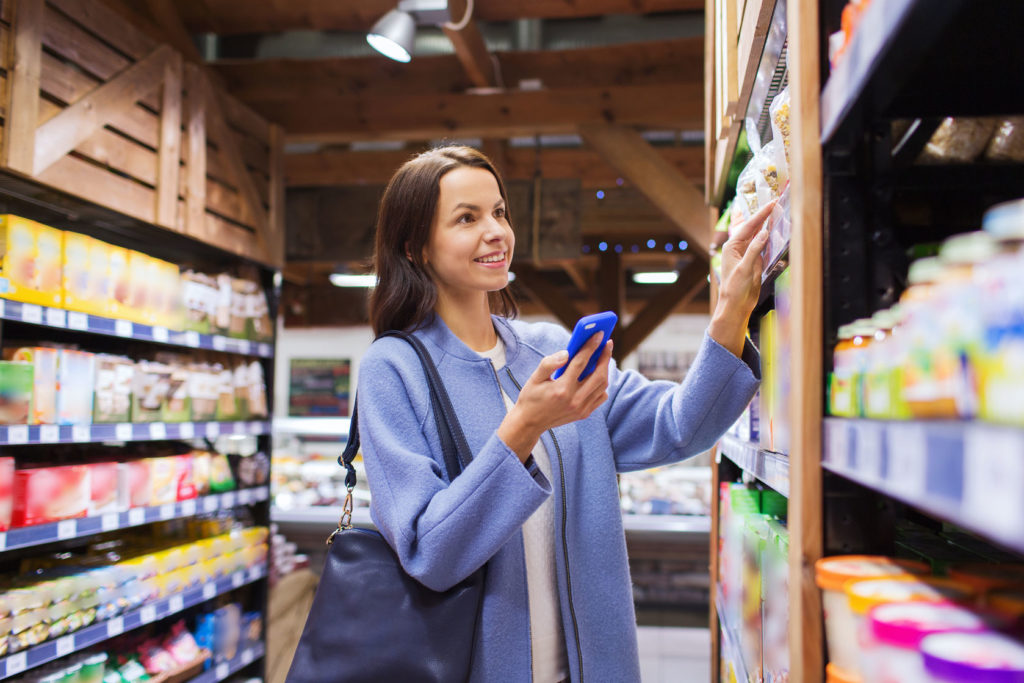Customer service is one of the top priorities for every grocery store, which is why they try to select the best employees possible in order to provide their customers with immediate assistance when needed. However, what if 95 percent of consumers want to be left alone while shopping? According to a recent HRC Retail Advisory survey, that is exactly the case as consumers are turning towards social media and in-store technology for their purchasing decisions. In addition, another consumer survey from Phononic reveals that consumers want to see more technological advancements in grocery stores.
HRC Retail Advisory conducted their survey of 2,900 Canadian and US consumers to better understand what drives shoppers into stores. The results from this survey found 85 percent of shoppers to prefer using in-store price scanners over asking a sales associate for the price of an item. In addition, 76 percent of the participants said that they would like to see more in-store apps that can provide product information and recommendations.
About 34 percent of respondents put importance on receiving promotional and sales information directly to their smartphones. Social media was also found to be a significant factor in the purchasing decisions of shoppers, with 70 percent of Gen Z and 63 percent of millennials claiming to consult the social media shares of their friends and family members to gather opinions on products before purchasing them.
“As consumers begin favoring in-store technology over sales associates while they shop, retailers must adapt to shopper expectations in the store environment,” said Farla Efros, President of HRC Retail Advisory. “Identifying the right technologies and pairing it with the right in-store experience for shoppers of different generations will be critical to retailers’ long-term success. Those that curate and customize the store experience and services to suit shoppers’ needs will see the benefits.”
Phononic’s survey studied consumer preferences when it comes to grocery shopping and what they think about the overall grocery landscape. The survey, involving 1,100 US adults, found that consumers are unsatisfied with the current grocery shopping experience.
In regards to what consumers would like to see in the future, convenience from technology was noted as a key factor. In fact, according to 50 percent of the survey participants, grocery stores have not yet integrated technology into their retail landscape like other retail stores have. In addition, over 75 percent of consumers would like to see technology in the frozen foods section that could help them with recipe ideas and finding the perfect wine or food pairings.
“As eCommerce innovation continues to disrupt brick-and-mortar retail in response to consumers’ desire for a more convenient and personalized shopping experience, traditional retailers are adapting to stay relevant,” said Tony Atti, Founder and CEO, Phononic.
In response to this technological demand, major retailers have been seen innovating their store aisles with new and interactive technologies. Earlier this year, Kroger announced the launch of Kroger Edge, a high-tech shelf display system that uses small digital screens instead of price tags to display the price of an item, its nutritional information and any promotions related to it. Kroger plans on implementing these Kroger Edge displays in 200 US stores by the end of 2018.
Walmart has also been investing in in-store technologies such as in-store robots that can check inventory levels, pricing and misplaced items. Moscow-based grocery chain Lenta, took in-store robots to a higher level last year with interactive “promobots” that can engage with customers and inform them about promotions, new products and even recognize regular customers.
As brick-and-mortar grocers continue to be challenged by online grocery shopping trends, investing in technological advancements might prove to be a powerful tool for them. As consumer demands continue to evolve and turn towards convenience through digital technologies, it is likely that grocers will be rolling out more innovations in the near future.
“By embracing new technology, retailers will improve consumers’ shopping experiences, and ultimately survive – and thrive – in this increasingly competitive landscape,” said Atti.












Join or login to leave a comment
JOIN LOGIN